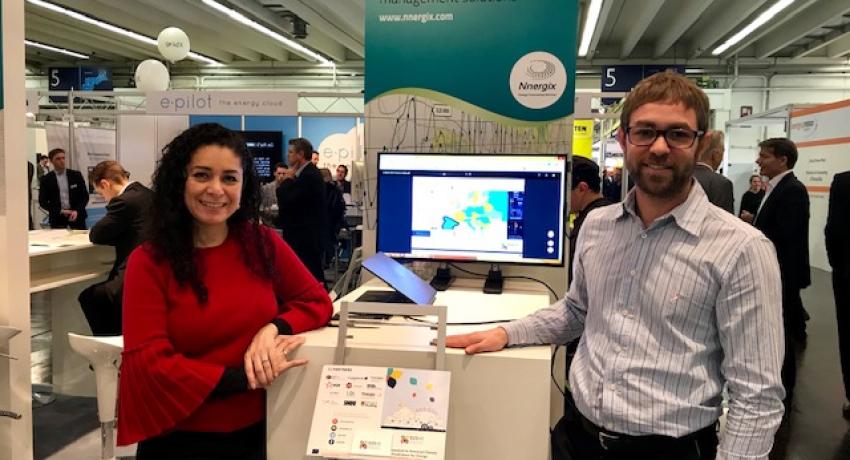A preview of the new forecasting tool for renewable energy production that is being developed by the S2S4E project was shown to attendees of the E-World Energy & Water fair in Essen, Germany from 5-7 February.
This was the first time that a preview of the new decision support tool (DST) was given in public.
A beta version of the tool will be launched in June, and it will be free to use for the first 18 months.
“We went to E-World because we wanted to find some new test users for the DST from the power industry, and our attendance there showed us that there is indeed a tangible need for sub-seasonal to seasonal climate forecasts,” says Karla Hernández, project manager at Nnergix.
Increasing interest in seasonal forecasts
“The majority of those attending E-World seemed to be power traders, and we noticed during the fair that their interest in seasonal forecasts is increasing. The next step for S2S4E would now be to verify the interest of other players in the electricity market, such as grid operators or power producers," adds Joan Miquel Anglès, business development manager at Nnergix.
The DST is being developed by S2S4E, which is a project funded by the EU’s research and innovation programme Horizon 2020.
S2S4E – which is short for “Sub-seasonal to Seasonal Climate Predictions for Energy” – aims to provide more reliable and usable forecasts for solar, wind and hydropower generation – whose production depends on the weather – with prognosis ranging from one week to three months ahead.
Essential for resources management
“With the push of renewable energies, electricity production is becoming more and more dependent on atmospheric variability. Anticipating anomalies for weeks and months ahead will become essential for managing resources in a better way,” says Llorenç Lledó, a developer at Barcelona Supercomputing Center.
The new tool will also show long-term outlooks for energy demand and supply/demand balance, both of which are also highly weather-dependent, especially in countries that rely on electricity for heating and cooling.
We are currently looking for people within the energy industry to test the tool and give us feedback on what they think about it and how useful its forecasts are. Please contact us if you are interested.
Written by Iselin Rønningsbakk / CICERO.

